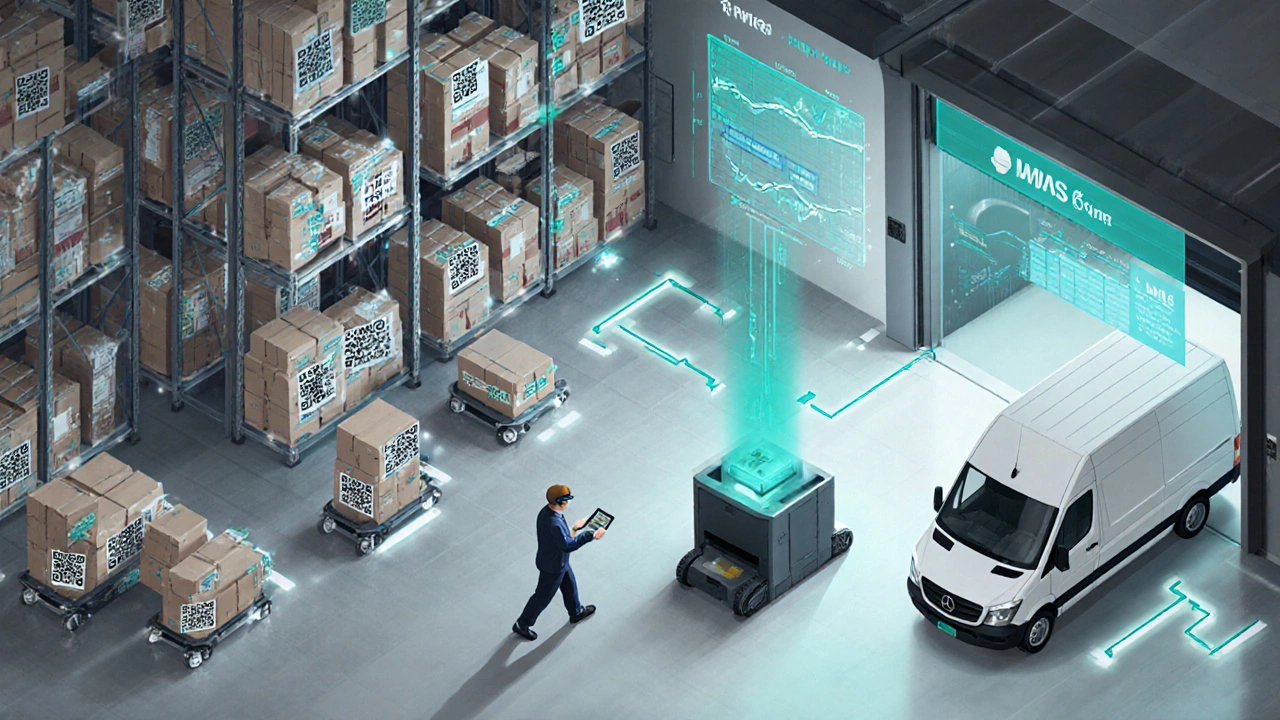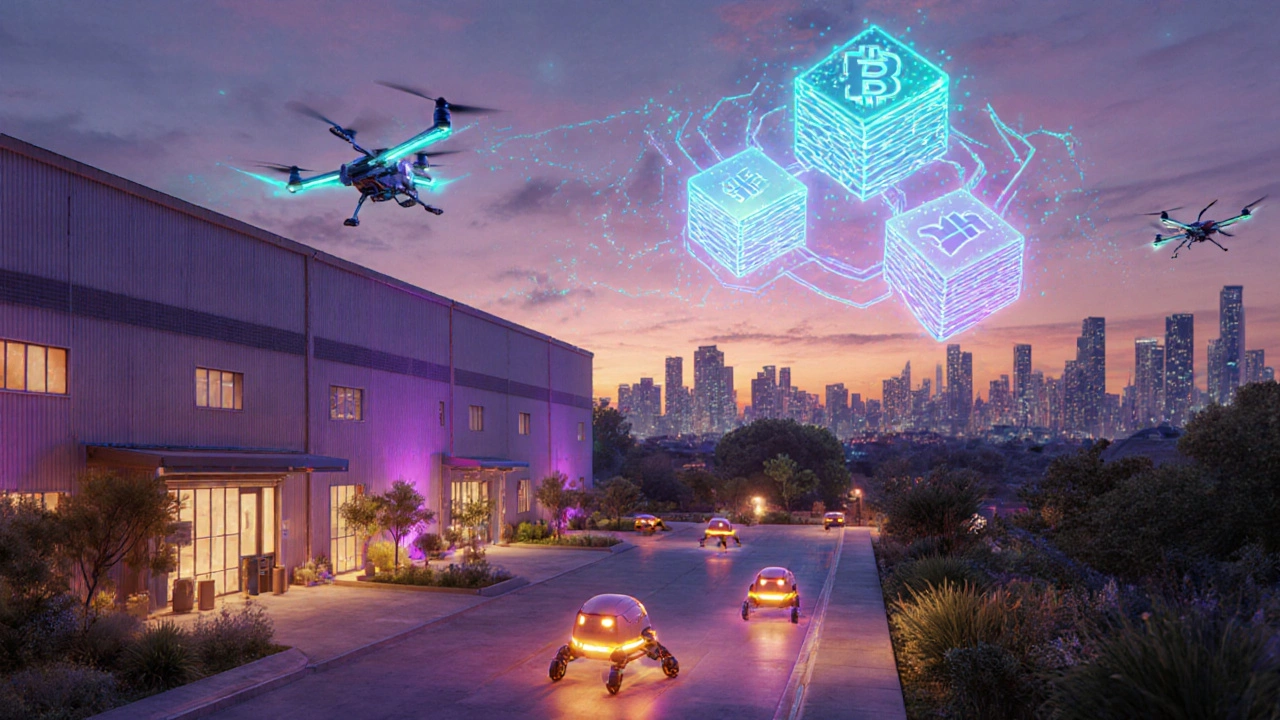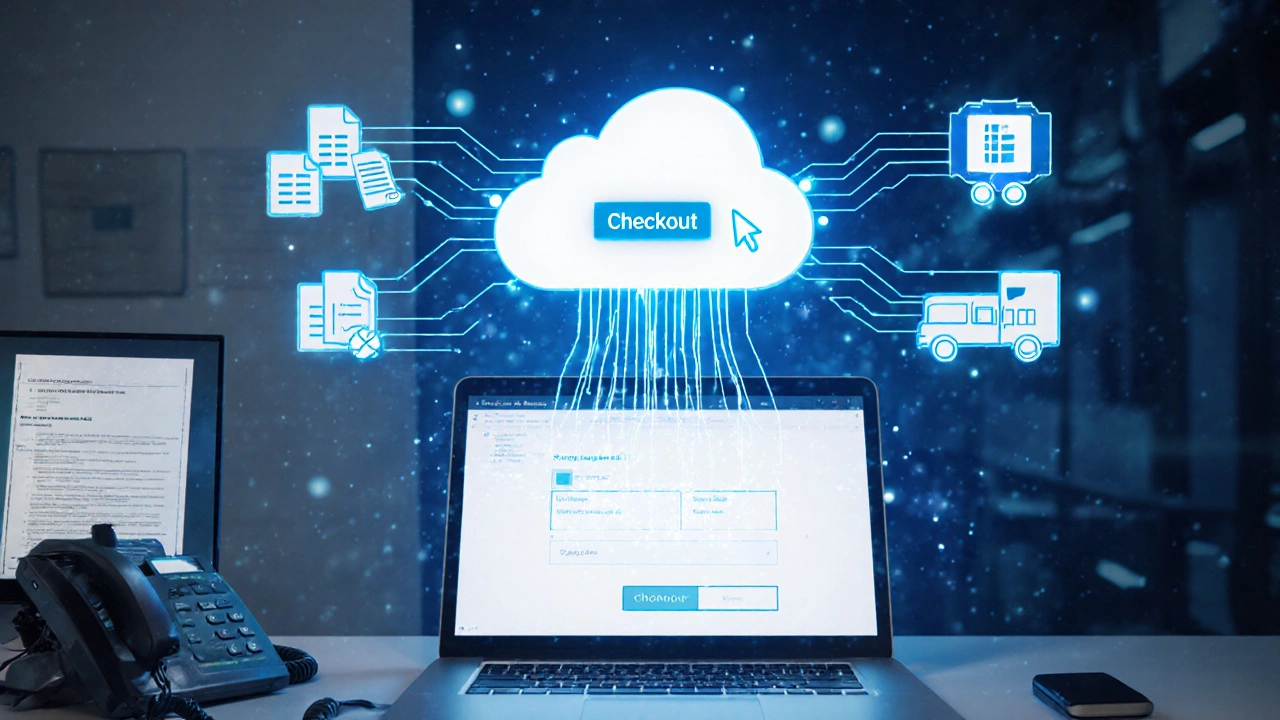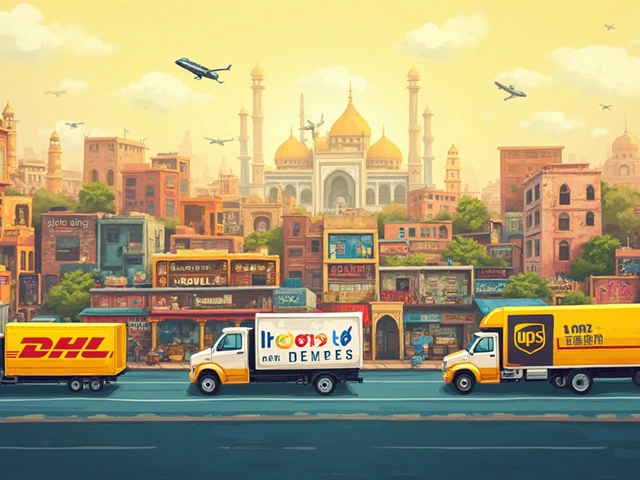E-Logistics Process Visualizer
This interactive tool shows how e-logistics transforms traditional supply chain processes into a seamless digital flow. Click through each step to see how data flows between systems.
Customer Places Order
Order management system (OMS) collects and validates order
Warehouse Management
Warehouse management system (WMS) optimizes picking and inventory control
Transportation Management
Transportation management system (TMS) selects carrier and books shipment
Delivery Tracking
Real-time tracking updates delivered to customer
Process Steps Explained
Order Management System (OMS)
Collects orders from e-commerce sites, validates payments, and assigns SKUs. Automatically forwards order data to the warehouse.
Warehouse Management System (WMS)
Optimizes picking routes, manages inventory levels, and signals when items are ready for shipment. Coordinates with TMS for outbound logistics.
Transportation Management System (TMS)
Selects the best carrier based on cost, speed, and service requirements. Books shipment through API integration with carriers.
Real-Time Visibility
Customers receive tracking information as packages move through the supply chain. Systems update automatically at each stage.
Key Benefits of E-Logistics
- Reduced Errors: Automated data flow minimizes manual input mistakes
- Faster Fulfillment: Real-time communication accelerates order processing
- Lower Costs: Optimized routing and carrier selection reduce shipping expenses
- Better Customer Experience: Transparent tracking and timely updates improve satisfaction
Quick Summary
- e-logistics combines software, data, and real‑time connectivity to turn shipments into a seamless digital flow.
- Key building blocks are order management, warehouse management, transportation management and API‑driven carrier integration.
- Digital visibility cuts errors, speeds up order fulfillment and lowers shipping costs.
- Adopting e‑logistics starts with mapping your current process, choosing the right tech stack, and testing integrations step by step.
- Watch out for data silos, poor change management, and under‑estimating the training needed for staff.
What Exactly Is e-Logistics?
When you hear the term e‑logistics is the use of digital tools and data exchange to plan, execute, and monitor the movement of goods from warehouse to the customer’s doorstep. In plain English, it’s the internet‑powered version of the old paper‑based supply chain. Instead of phone calls and faxed manifests, every step talks to a cloud platform, updates in real time, and triggers the next action automatically.
Think of an online store you love. You click ‘Buy’, the system instantly checks inventory, books a carrier, sends a tracking link, and updates you when the package is out for delivery. That whole invisible choreography is e‑logistics in action.
How the Digital Flow Works - Step by Step
- Customer places an order on the e‑commerce site.
- The order management system (OMS) collects the order, validates payment, and assigns a SKU pushes the order data to the warehouse.
- Inside the warehouse, the warehouse management system (WMS) optimizes pick paths, controls inventory levels, and signals when items are ready to ship.
- Once packed, the WMS triggers the transportation management system (TMS) to select the best carrier based on cost, speed, and service level.
- Through API integration the TMS communicates with carrier platforms, books the shipment, and receives a tracking number.That tracking number is fed back to the OMS, which updates the order status and sends a real‑time tracking URL to the customer, letting them watch the parcel’s journey.
- During transit, the carrier’s GPS data feeds into a data analytics platform that monitors delivery performance, flags delays, and suggests route improvements.
- When the package lands at the doorstep, the last‑mile delivery team confirms proof of delivery and closes the order in the OMS.
Every hand‑off is a data push, not a phone call. If a step fails-say inventory is out of stock-the system automatically notifies the OMS, which can either back‑order the item or suggest an alternative product to the shopper.

Core Technology Components
Below are the main pieces you’ll find in any robust e‑logistics stack.
- Order Management System (OMS) - central hub for incoming orders, payment verification, and customer communication.
- Warehouse Management System (WMS) - guides pickers, manages stock locations, and streams packing data.
- Transportation Management System (TMS) - selects carriers, calculates tariffs, and optimizes routes.
- API Integration Layer - the glue that lets OMS, WMS, TMS, and carrier platforms talk without manual data entry.
- Real‑Time Tracking Engine - aggregates GPS and scan events to produce a live map for shoppers.
- Data Analytics & Reporting - dashboards that turn shipment data into actionable insights (on‑time rate, cost per mile, carbon footprint, etc.).
- Last‑Mile Delivery Platform - often a mobile app used by drivers to receive routes, capture signatures, and report exceptions.
Most modern solutions bundle several of these functions into a single cloud suite, but it’s common to see a best‑of‑breed approach-e.g., a specialized WMS paired with a lightweight OMS.
Why e-Logistics Beats Traditional Logistics
| Aspect | Traditional | e‑Logistics |
|---|---|---|
| Visibility | Manual spreadsheets, delayed reports | Live dashboards, instant tracking |
| Process Automation | Phone calls, faxed manifests | API‑driven order flow, auto‑label generation |
| Speed to Market | Days to update inventory | Real‑time stock updates across channels |
| Cost Control | Hidden fees, manual audits | Dynamic carrier selection, data‑driven routing |
| Customer Experience | Limited tracking, vague ETAs | Precise ETA, proactive notifications |
Those differences add up. A 2023 logistics benchmark study showed companies that fully digitized their supply chain cut order‑to‑delivery time by 30% and reduced shipping errors by 45%.
Getting Started - A Practical Checklist
- Map your current flow. Write down each hand‑off-sales, picking, shipping, delivery-and note where data gets stuck.
- Pick a core platform. Decide whether you need a unified suite or separate best‑of‑breed solutions for OMS, WMS, and TMS.
- Secure API access. Verify that your carriers (UPS, DHL, local couriers) offer RESTful APIs for rate quotes and label creation.
- Integrate inventory. Connect your product catalog and stock database to the OMS so availability updates instantly.
- Set up automation rules. For example, auto‑assign a 2‑day carrier for orders under $100 and a premium service for larger orders.
- Roll out real‑time tracking. Embed the tracking URL in order‑confirmation emails and on the ‘My Orders’ page.
- Train the team. Run workshops for warehouse staff on using the WMS tablets and for drivers on the last‑mile app.
- Monitor KPIs. Start with on‑time delivery, order accuracy, and shipping cost per order. Adjust rules based on the data.
Don’t try to change everything overnight. Pick one pain point-like missed shipments-and build the digital fix around it, then expand.

Common Pitfalls and Pro Tips
- Pitfall: Treating technology as a plug‑and‑play solution.
Tip: Run a pilot with a single product line before scaling across the entire catalog. - Pitfall: Letting data silos form.
Tip: Use a centralized data lake or integration platform to keep every system in sync. - Pitfall: Ignoring carrier constraints.
Tip: Keep carrier service windows and blackout dates updated in the TMS via API. - Pitfall: Skipping change‑management.
Tip: Involve warehouse supervisors early; their buy‑in speeds up adoption. - Pitfall: Over‑optimizing for speed and forgetting cost.
Tip: Set cost‑per‑order as a KPI alongside delivery speed.
Future Trends Shaping e‑Logistics
While the fundamentals stay the same, a few emerging techs are already nudging the industry forward.
- AI‑driven demand forecasting. Machine‑learning models predict inventory needs down to the SKU, reducing stock‑outs.
- IoT sensors in warehouses. Real‑time temperature and humidity data protect sensitive goods.
- Autonomous delivery robots. Last‑mile fleets of drones or sidewalk bots are being tested in major cities.
- Blockchain for provenance. Immutable shipment records boost trust for high‑value or regulated items.
Staying aware of these trends helps you plan upgrades before your competitors do.
Frequently Asked Questions
What is the difference between e‑logistics and traditional logistics?
e‑Logistics relies on digital platforms, API connections, and real‑time data to automate each step, while traditional logistics uses manual processes like phone calls, paper forms, and static spreadsheets.
Do I need a separate system for each logistics function?
Not necessarily. Some cloud suites bundle OMS, WMS, and TMS together. However, many businesses prefer best‑of‑breed tools that specialize in a single function and connect via APIs.
How fast can I expect to see results after implementing e‑logistics?
If you start with a pilot covering a single product line, you can see reduced order‑to‑delivery times and lower error rates within 4‑6 weeks. Full‑scale rollouts typically take 3‑6 months.
Is real‑time tracking essential for e‑logistics?
It’s a core expectation today. Customers rely on a visible ETA, and carriers benefit from reduced support calls when they can see exactly where a parcel is.
What are the biggest cost drivers in e‑logistics?
Carrier rates, fuel surcharges, and last‑mile delivery labor are the primary expenses. A good TMS can lower these by automatically picking the cheapest carrier that still meets service‑level agreements.





